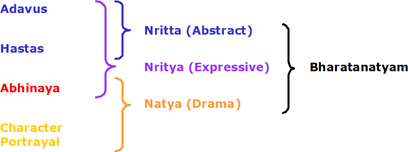Bharatanatyam Mudras Pdf
Bharatanatyam is one of the most glorious and oldest Indian classical dance forms which originated in the ancient temples of Tamil Nadu, India, 5000 years ago. It is an extremely precise dance form, known for its neat and clean lines with geometric form, depicting the vivid aspects of devotion, love and erotica. The most beautiful aspect of this dance form is that it contains the power of healing, is cathartic, and helps build the mind-body connection.
Bharatanatyam has three distinct streams or aspects:
Nritta
which means pure dance steps or dance sequences that are performed rhythmically. These movements and gestures do not convey any mood or thought. Their sole purpose is to create beauty. Adavus – which are the basic steps in Bharatanatyam- form the basic component of Nritta.
Mudras are used in Indian forms of dances. There are over 200 mudras in bharatanatyam and over 250 in mohiniattam. The attached presentation by Shri Mani Iyer has details of 10 mudras that can result in amazing health benefits. For each mudra the slide gives method, speciality, time duration and benefit. Download Free Bharatanatyam Mudras In Tamil Thebookee Bharatanatyam Mudras In Tamil Thebookee When somebody should go to the book stores, search establishment by shop, shelf by shelf, it is in point of fact problematic. This is why we provide the ebook compilations in this website. It will totally ease you to look guide bharatanatyam mudras in.
Nrittya
involves interpretation and is the mime that corresponds to the song accompanied by music and song. This aspect of Bharatanatyam involves showing emotions, sentiments and to convey a message through steps, movements and gestures.

Natya
Bharatanatyam Mudras Pdf
is the art of storytelling through dance. Natya is the dramatic representation and the technique involved here is called “Abhinaya”. The dancer through steps, gestures, movements and expressions, enacts a story. Mostly the theme of Natya is mythological based on Ramayana, Krishnaleela or Mahabharata etc. The dancers may dress like the character they are enacting.
In this blogpost, we will introduce you with the “Nritta” aspect of this beautiful dance form-
As mentioned before Adavus are the initial steps in Bharatanatyam which form the basic component of Nritta. Just like how alphabets mean a lot to a language, Adavus mean a lot to a Bharatanatyam dancer or student.
They are steps that are combined to form a dance sequence and are done in synchronization with the syllables. An Adavu is a combination of –
- Sthaanam ( The position of the legs)
- Mandalam (The position of standing)
- Chaari (The movement)
- Nritta hasta (The hand gestures)

Before we discuss the Adavus, we would like to shed light on some of the most important components of Bharatanatyam.
Namaskara
The most important component of Bharatanatyam is “Namaskara”. Namaskara means paying respect to god, your teacher, your audience when you perform and most importantly to mother earth since you will be stomping on her while dancing.
Posture Training
Posture training is a prerequisite to any dance style. In Bharatanatyam, we focus on maintaining a strong and focused stance which further adds up to the beauty of our movement. Some things to keep in mind for a perfect posture-
- Make sure that your back is absolutely straight,
- Shoulders are thrown back,
- Keep your chin straight. It should not face up, droop down or sideways.
- Hands are on your waist and you sit in the Araimandi position or the half-sitting position.
Araimandi
Araimandi is the fundamental posture of Bharatanatyam. It is also known as Ardhamandala, Ukkaramandala, Ayatam or the half-sitting posture. It is written in the Natyashastra that in Araimandi, the distance between the head and the navel becomes equal to that of the earth and the navel.
Here are some of the basic steps for beginners-
Tatta Adavu
Tatta Adavus are the first Adavus that you would learn in your Bharatanatyam beginners class. Tatta means to strike or to tap in Tamil. Watch the videos below to learn and understand these steps better.
Variation 1
Variation 2
Variation 3
Natta Adavu
Now it’s time for the second set of Adavus, Natta Adavu. In Tamil, Natta means to stretch. In this basic step you stretch your foot, bring it back and tap it on the floor. Watch the videos below to learn and understand these steps better.
Variation 1
Bharatanatyam Mudras In Malayalam Pdf
Variation 2
Mudras And Their Meanings Pdf
Learn about the remaining Adavus and other important basics of this dance form through our “Bharatanatyam Beginners Coursework” and learn how to dance Bharatanatyam online with Dance With Madhuri. Enrol for an online lesson taught by Bharatanatyam exponent Namita Bodaji and her team. From beginners course to a well detailed intermediate coursework, everything is available in well guided, easy online tutorials. Take the lessons here.